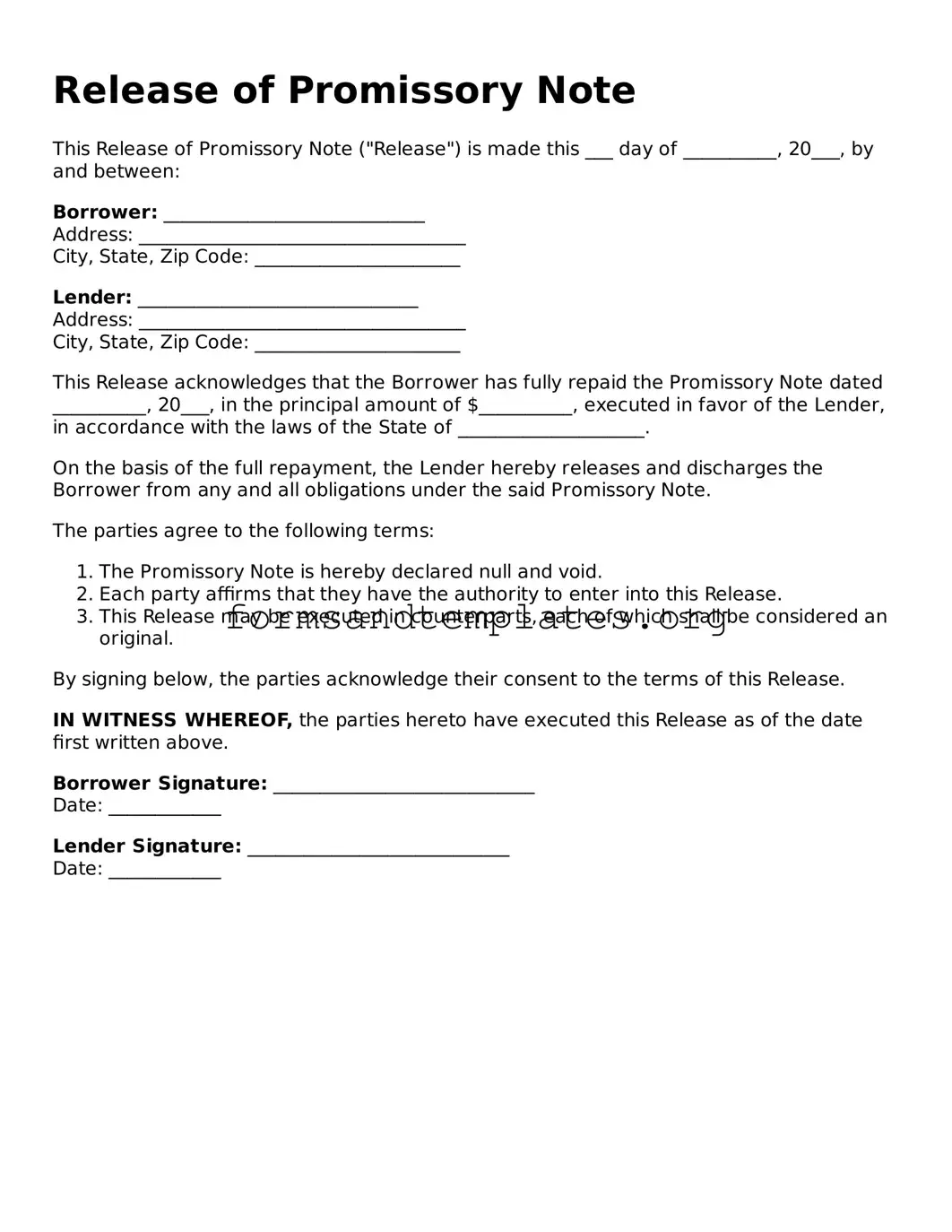Release of Promissory Note
This Release of Promissory Note ("Release") is made this ___ day of __________, 20___, by and between:
Borrower: ____________________________
Address: ___________________________________
City, State, Zip Code: ______________________
Lender: ______________________________
Address: ___________________________________
City, State, Zip Code: ______________________
This Release acknowledges that the Borrower has fully repaid the Promissory Note dated __________, 20___, in the principal amount of $__________, executed in favor of the Lender, in accordance with the laws of the State of ____________________.
On the basis of the full repayment, the Lender hereby releases and discharges the Borrower from any and all obligations under the said Promissory Note.
The parties agree to the following terms:
- The Promissory Note is hereby declared null and void.
- Each party affirms that they have the authority to enter into this Release.
- This Release may be executed in counterparts, each of which shall be considered an original.
By signing below, the parties acknowledge their consent to the terms of this Release.
IN WITNESS WHEREOF, the parties hereto have executed this Release as of the date first written above.
Borrower Signature: ____________________________
Date: ____________
Lender Signature: ____________________________
Date: ____________
